From September 2 to September 4, La Biennale di Venezia will host the 9th edition of the Venice Gap-Financing Market. Find out more about the 16 immersive projects selected for this 2022.
Nine years ago, in order to fill a market space for existing productions that need to complete their financing, the Venice Production Bridge of the Biennale di Venezia launched Venice Gap Financing.
Films and feature-length documentaries that have acquired 70 per cent of their required budget and immersive experiences that have already found 30 per cent are eligible to participate in “one-to-one meetings between the projects’ teams and financiers, public and private funds, producers, distributors, sales agents, post-production companies, broadcasters, streamers, etc.” (from the Venice Gap-Financing brochure)
The Venice Gap-Financing Market has always focused on diversity selecting any kind of project, from drama to genre movie, from low budget to big budget, from renowned directors to new comers.
Venice Gap-Financing Market official website
The 2022 edition hosts 16 immersive productions in various stages of development and 11 projects developed through the Biennale College Cinema Virtual Reality. They will meet over three days (2 to 4 September), during the 79th Venice International Film Festival, at the renowned Hotel Excelsior – one of the most famous locations of this historic film festival.
Since we at XRMust are more curious than cats, we had no choice but to contact these selected projects to find out more about them: what they are about, what is their connection to immersivity, a couple of “secrets” behind them. We asked the teams not to reveal too much – we don’t want to spoil the joy of discovering these productions for yourself when they join the festival circuit in the years to come… Just the right amount of information to make us sigh and dream of the days when we can experience them.
0 – ALBEDO (Italy)
by Iolanda Di Bonaventura and Saverio Trapasso | Artheria s.r.l.
IOLANDA DI BONAVENTURA – 0 is an immersive installation, a collective and interactive Virtual Reality (6DoF) experience that integrates linear storytelling with a set design that enhances the participant’s experience by integrating the sense of touch. The piece aims to describe, through visual and narrative elements, the space of “indefiniteness” that each of us goes through before coming into the world: birth is here understood both in a ‘physical’ and metaphorical sense – that is, through the achievement of a state of greater self-awareness.
Birth is not, within the piece, a moment that is passively undergone, induced by natural forces, but a space to be re-appropriated through one’s own decision-making power. For this reason, the participant is called to move and walk inside the piece: it is through the movements of their body, in fact, that the participant manifests their own way of being actively part of the process of birth and evolution.
0 uses a real-time rendering engine as well as a tracking system to use the viewer’s position and their body movements inside the installation. The narrative unfolds according to the viewer’s position in relation to the space – moving forward will make the experience evolve, recreating the idea of a metaphorical path to ‘birth’. The participant guides the experience and, at the same time, is guided by it. It is precisely his/her steps – a simple, instinctive action – that unravel their journey, in a crescendo of involvement that starts from the feet and ends with the complete integration of the body.
The user-experience comes from some studies related to the recovery of archaic gestures, taking its cue from the study of movement in psychological and neurological disciplines. The main reference for those studies are Dance Movement Therapy – a discipline that is defined by the American Dance Therapy Association (ADTA) as the psychotherapeutic use of movement to promote emotional, social, cognitive, and physical integration of the individual, for the purpose of improving health and well-being – and the Polyvagal theory by Stephen Porges, about the role of of the vagus nerve (autonomic nervous system) in emotion regulation, social connection and fear response.
Can art and technology help us rewrite our relationship with the experience of being alive? Can art and technology lead us back to our essence? 0 is the suspended dimension between presence and absence, between life and death. 0 is the place that used to be, before we came into the world: the metaphorical journey that we all must make before being born – from darkness to light, from absence to presence, from being disembodied to having a body.
Iolanda di Bonaventura, director of “0 – ALBEDO”
ALTERNATES (BERGANTIAN) (Japan, France)
by Jonathan Hagard | CinemaLeap Inc., Floréal Films
JONATHAN HAGARD – Alternates (Bergantian) depicts a neighborhood in Ubud, the Balinese cultural capital, in an alternate reality when its culture has partly disappeared. It is a VR story about what could have changed and what doesn’t change in Bali. […] The story begins in 2020, in the midst of this health and economic crisis. Atop of an unfinished house, a presumably crazy man imagines what his family and the neighborhood would be, if Bali had taken the same path as neighbor Java did and lost its cultural and environmental foundations.
We are now in the man’s imagination, a parallel world. We are still in Ubud, but the house is lost in urban chaos; trees are gone too. In this parallel world, Bali lives under a totalitarian regime and has lost most of its traditional temples.
In the same house, a young woman secretly practices Wayang Topeng, a local classical dance forbidden in Indonesia after 75 years of strict Sharia authority in this timeline. Amidst accelerating gentrification, she attempts to harmonize her artistic passion and the contrasting social, religious and political pressure from her neighborhood. However, this major urban project will be impacted by the awakening of Bali’s secret mountain, Mount Agung. This natural event that has influenced Indonesian arts and traditions for centuries reminds us that, despite the unpredictability of civilizations, nature does not change much and some traditions find a way to resist.
Unlike Replacements that shows a true story in a fictional village, Alternates shows the alternate reality of a real village. This existing abandoned house has recently been renovated and will permanently welcome the main experience of Alternates. The family who live there are also the protagonists of Alternates.
In this VR 6DoF linear story, the audience, as a roommate of the eldest daughter, the main character, will have the freedom to walk around her room and to observe the many small details which will help them understand the background of the film, whatever their knowledge of Indonesia. Like her, they will be in conflict between the creativity she harbors in private and the social pressure she follows in public.
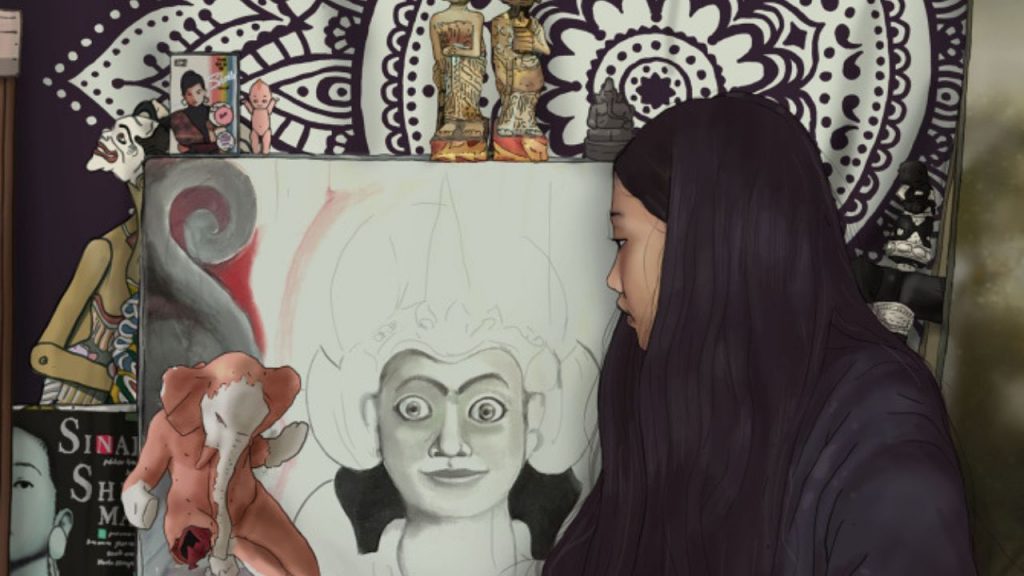
AMAZING MONSTER! (France, Switzerland)
by Raphael Penasa, Allison Crank and Jonathan Droz | Wowl Production and Small Creative
“Emma is 7 years old when she realizes that her brother, Liam, is the most incredible boy in the world.
Emma is 9 years old when Liam asks her to help him with a homework problem (but he was doing it very well on his own).
Emma is 12 years old when she realizes that she and Liam can tell each other anything.
Emma is 14 years old when she realizes that her brother is smart but lazy.
Emma is 15 years old when she realizes that she can never marry her brother.
Emma is 16 and heartbroken by her ex on the day Liam takes her to see another perspective of the world from the Diesse Tower.
Emma is 19 on the day her brother disappears in the middle of the lake.
Emma is 19 on the day she feels her life has ended“
Find out more about Amazing Monster! and its beautiful story on the official website.
BLISS CLUB VR (JOUISSANCE CLUB VR) (France)
by Camille Duvelleroy | Atlas V
CAMILLE DUVELLEROY – For me, Bliss Club VR, is an interactive and narrative experience about sexuality and pleasure. The player explores a club with a lot of rooms. Each room is dedicated to a discovery : you search the good gesture, the good rythm to give pleasure to a vulva, a penis. Whether you are a woman, a man, a non binary person, all the rooms work for you. A caring and funny voice accompanies you during the game. It’s a game for one player.
Bliss Club VR has already an Instagram account and a book. The VR allows you to touch, feel, try, retry, listen in a safe space where your curiosity is always rewarded.
CROW CASTLE (KRAKSLOTT) (Sweden)
by Ismaila Jallow | GötaFilm
ISMAILA JALLOW – Crow Castle is a journey into a memory palace created by a boy who has become two instead of one. The boy claims that the reason behind him being two instead of one is that his parents were stubborn and raised him with two different names. As the story unfolds, we realize that this isn’t entirely true. What’s really happening is that the boy has split himself into two in order to avoid the traumas and secrets he has kept buried deep inside.
With Crow Castle, we are pairing the logic of dreams with the concept of memory palaces, in this case; built by a very troubled individual. For me, it’s in the spatiality of VR, combined with agency of participants, that the format’s potential really lies.
Ismaila Jallow, director of Crow Castle
This piece couldn’t be told in any other format than VR. At least not as I envision it. This is an experience that uses a larger room-scale environment with an intent to activate the participant and make them part of the story progression. We are aiming for the ‘illusion of choice’, which means to install a feeling of being able to explore in any way possible yet still have the outcome of a linear story. When the participant realize that they can walk through virtual walls, we need a way to make that decision part of the story, without breaking the integrity of the dramaturgy. For us, this means that there will be different story branches, but they all lead to the same ending, and even though there are some boundaries within the experience, we use code and visual tools to draw from the fluid rules of dreams. I believe VR-makers can add a lot to their editing toolbox by looking at dreams, as VR is the closest we have ever been to put ourselves in dream-like environments.
What really makes Crow Castle stand out is the way it handles space. Being able to move within a virtual world truly becomes a physical experience when we can walk around relatively freely. If the virtual world is consistent with its logic, not meaning that it has to be true to the logic of reality, we become immersed in a completely different way than just sitting in a VR-chair or being confined to an area of 2x2m.
One of the things I’m most excited about with Crow Castle is how we are working to map the many different impulses that participants can have (including the impulse of doing absolutely nothing) throughout the experience. By doing this we create triggers that will make the story progress in the direction we want. We have named the framework for this approach ‘BigBrain’, since it checks and controls that the various sequences are played exactly when we want them to be played.
EYES OF SHAME (GEDOS AKYS) (Lithuania, France, Slovenia)
by Tomas Tamosaitis and Emmanuel Rouglan | Insomniak, Joni Art, Institute for Transmedia Design
TOMAS TAMOSAITIS – It all started eight years ago, when I began to work as a volunteer at a hospital for problematic teens. There I met an eight-year-old boy, who suffered from anger attacks. At one point I asked him why he was so angry. And he replied: ‘I have a plan. I hate this place, I will destroy everything here and they will kick me out and send me home. I will destroy everything at home, because I hate my home, and they will kick me out from home too. And then I will free. And I will kill everyone, because I hate everyone’. For me this was the moment when I understood that maybe volunteering alone was not enough.
With our project we aim to give a view on social exclusion and alienation of troubled teenagers. We wish to evoke reconsideration of social values and social phobias, resulting in systematic discrimination of those who do not fit into usual norms of behavior.
In Eyes of shame we will put the user into the skin of Eyeless, a 14-year-old teenager, who is admitted to the problematic teenagers’ hospital for treatment. The user will experience the film from her point of view and will live through her story, which will subtly adapt to the user’s behavior.
In some scenes we will change the user’s position from being the main character to being the observer from aside. We want our users to be able to experience the story from different angles. We think that this will deepen the users’ understanding of what the problematic teens go through in their daily life. And understanding can trigger empathy in the most powerful way.
The topics of mental health and troubled teenagers are often still considered taboo and are surrounded by many prejudices and misconceptions. With Eyes of shame we try to touch on these topics using contemporary ways of storytelling that can be appealing to our main target audience – young adults and adults. Therefore we developed a bald and colourful visual style, which is not often seen in Virtual Reality.
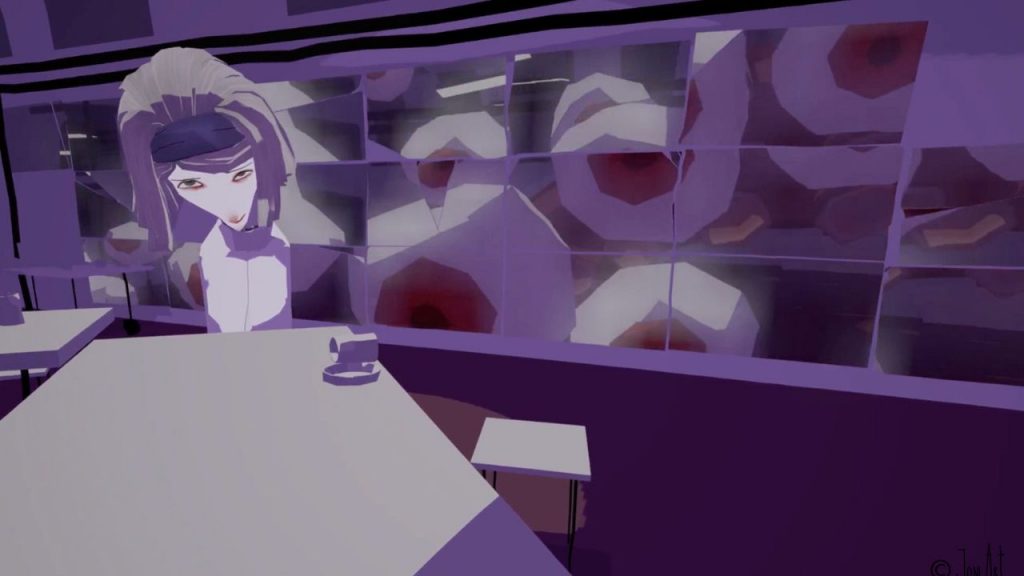
FATHER’S VIDEO TAPE (Taiwan)
by Baboo Liao | SWSG
HSIAHSIEN CHAO (executive producer) – Father’s Video Tapes is originated from photographer Yang Teng-chi’s recollection of his accidental discovery of his father’s sex tapes of him and another male friend of his one time when he sneaked in his father’s bedroom during his adolescence. This led to an unexpected understanding of his own father’s sexual orientation and his life as a closeted man.
Father’s Video Tapes is a set of conversations that spans some twenty years. Making the best of the VR technology, we hope to recreate two narratives from the two respective points of view of the father’s and the son’s. From the son’s peculiar angle, the viewers are ushered into the closet of his father‘s, where they will unveil the father’s long-hidden secrets. When finally stepping out of the closet into 21st-century Taiwan, the father will be stripped of his authority, and gladly recognize the footing of his gay son.
It is without a doubt the revelation of Yang’s personal history and family story. However, it also lands on the social/historical circumstance gay men have been forced under. The oppressions gay men had to fight (or are still fighting) and the liberation they have finally been blessed with are both to be seen in the work. This piece will not only attempt to unearth the memories of the gay people from the earlier times, but also chronicle Taiwan’s social movements advocating LGBT people in society, calling to attention the social disruption that has occurred”
Baboo Liao, director of Father’s Video Tapes
GARGOYLE DOYLE (USA, Argentina)
by Ethan Shaftel | EasyAction, Detona Cultura
“Doyle is a grouchy, self-important gargoyle with a chip on his shoulder – quite literally, as he was badly damaged in a fall during his installation above the cathedral’s main entrance. Relegated to a forgotten back alcove with other “irregular” gargoyles, Doyle resents the hand life dealt him, especially the fact that he is stuck two feet from Chet, a decorative metal rain gutter. Chet is the yin to Doyle’s yang, a chatterbox optimist who never shuts up. Ever.“
From Ethan Shaftel’s official website
ETHAN SHAFTEL – I had been struggling to explore narratives in AR for quite a long time but kept hitting dead ends. My approach to VR narrative has always involved large changes of scale and rapid position and location changes for the visitor, which doesn’t translate well to AR where your scale and position relative to the actual world remains fixed. When I finally “gave up” and gave myself permission to work on a VR story about gargoyles that I was actually excited about, then of course it was suddenly obvious that this was the very story that had take place in both AR and VR for thematic reasons that have to do with exactly that formal quality of AR: being stuck in one place.
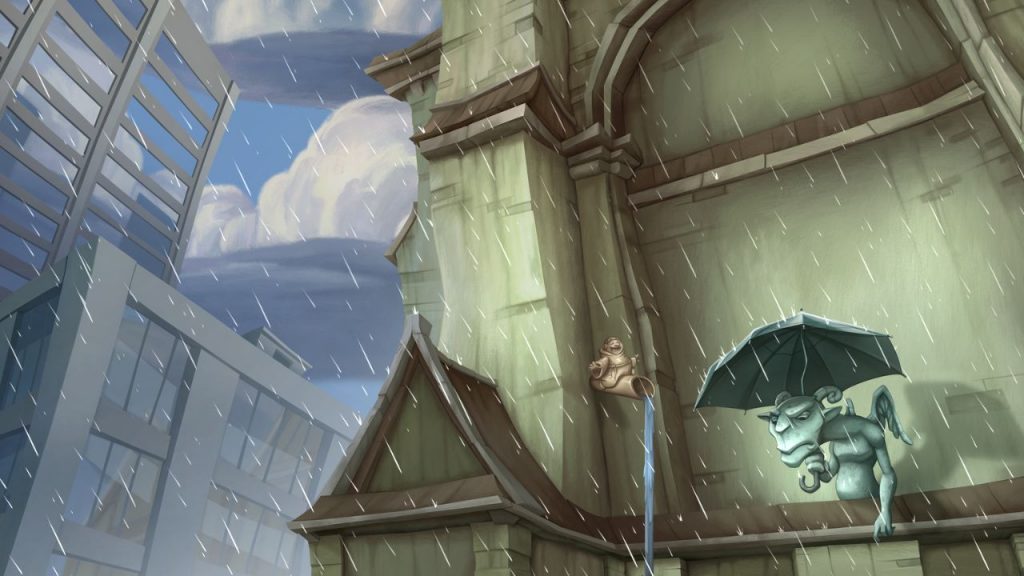
KANDAKA (Sudan, USA, France)
by Ainslee Alem Robson | Guada Labs
“Designed specifically for 180° LED screen, this film is a tribute to Amanirenas, a one-eyed warrior Kandaka known for defeating Roman forces.
Kandaka is the Nubian title for a revolutionary woman or queen. Enter the ruins of the Kushite Empire through the perspective of Amanirenas, a one-eyed warrior Kandaka, known for defeating Roman forces. Boundaries are blurred between physical and digital, antiquity and photogrammetry. Visit Sudan’s pyramids and learn about the Black Pharaohs. Meet Amanirenas herself as she awakens the spirit of her past unleashing an indigenous consciousness of ancestral strength and femininity into the future”
From XRMust database about Kandaka and the Black Pharaohs
KILLING PHILIP (Brazil)
by Fabito Rychter and Amir Admoni | Delirium XR
Philip is not like us. He is just a 3D character! And we brought him here to tell him exactly that! “I’m sorry, Philip, but you are not real. You are nothing but an artifical pre-programed being. Your thoughts are scripted, your feelings are fake. You are just a simulation. Poor Philip! That must be a lot to take in. Maybe you could help him. But no. This experience is not called “Helping Philip”. You are going to kill him!
Fabito Rychter, director of Killing Philip
FABITO RICHTER – KILLING PHILIP is an interactive VR philosophical comedy about death, artificial intelligence, and what it means to be human.
With KILLING PHILIP we want to continue the research we´ve been doing on the grammar of narrative VR. In GRAVITY VR, we played with motion and weightlessness. In LAVRYNTHOS, we played with impossible spaces. In KILLING PHILIP, we will play with empathy and Artificial Intelligence.
Artificial Intelligence is one of the main themes we will be dealing with in the following years and we want to be part of the conversation.
MIRROR (Taipei)
by Wu De-Chuen | Longwell
NANA LOU (MAMIE LOU) (France, Luxembourg)
by Isabelle Andreani | Small Creative
ISABELLE ANDREANI – NANA LOU is an interactive story for virtual reality that invites the viewer to take the place of a spirit accompanying a grandmother in her last moments. With radiant hands and a luminous halo, they will comfort the main character during medical ordeals and help her to revisit her past to turn this last journey into a wonderful story.
Inspired by Dr Elisabeth Kübler Ross in her pioneering work on end-of-life care, the experience invites the viewer to show their presence through their looks and gestures.
The originality of this immersive experience lies in the non-verbal interactions between the spectator and the virtual character, as well as in the changes in point of view. In the Tree of Life, the spectator floats in the mist above a plant world in extinction. They are guided by the spirits to different miniature rooms, in which it is possible to see Nana Lou with the other characters. The spectator then enters these rooms, which materialize on a human scale. At the hospital, they incarnate in the presence of Nana Lou. When a memory appears, they enter Nana Lou’s memory, where they adopt her point of view and revive her past with their magic hands.
SOULPAINT (UK, The Netherlands)
by Niki Smit and Sarah Ticho | Monobanda, CCC
NIKI SMIT and SARAH TICHO – SOULPAINT exists at the nexus of immersive technology, neuroaesthetics and healthcare to explore the richness of the embodied human experience. Audiences are taken on an embodied journey to explore and creatively express felt-sense. Through the process of 3D drawing and movement, each participant is invited to reveal their unique inner realities, and observe the creations of others.
Antidisciplinary in nature, Soulpaint is an immersive art experience, a research tool and a healthcare intervention, created in collaboration with artists, scientists and patients. Using interactive technology in a genre-pushing way, this experience encourages new forms of embodied insight, allowing us to reflect on the diversity of human experience on an individual and global level.
We chose to develop it in a virtual environment, because we are exploring embodied experience, and therefore requires an embodied medium. Soulpaint is a fully interactive experience and therefore taking inspiration from other 3d drawing experiences – we wanted to enable people to be able to paint onto a lifesize body, and engage with lifesize artworks. Audiences can paint on, inside and outside the body – and we’re excited to see what we will discover about the different ways people can visualise sensations in the body.
STEPHEN HAWKING’S BLACK HOLES (UK)
by Elliot Graves | Atlantic Productions, Alchemy
ANTHONY GEFFEN (producer) – As soon as Hawking saw virtual reality and I was able to show him what it could do, it took minutes and he thought ‘this is the dimension which I can bring my thoughts and my theories to the world population’. This project is utterly unique – it’s a journey with Stephen Hawking, written and devised by him, through his head, where you go off on a journey through the universe. Ultimately, you go through a black hole and experience one of the most of the important things in his thinking, and I think that’s pretty damn special.
THE TOWERS OF FEBRUARY – VR (Germany)
by Philipp Wenning | Studio Philipp Wenning, Expanding Focus GmbH
PHILIPP WENNING – The Towers of February is a poetic exploratory narrative adventure game where you are the main character. It is delivered as a first person VR Mini Series consisting of 4 episodes of 15 minutes. The work is based on the story of Tonke Dragt by the same title about a fourteen-year-old boy that finds himself transported to another dimension and unable to remember his past.
The first time I read it I was 14 years old. The story and narrative structure moved me, as it opened up an alternative view on reality. After having worked on uncountable different cinematic VR productions and having coproduced and directed anything from high end 360° video to fully interactive VR experiences, I took a moment to reconsider what it really is, that makes VR the ultimate medium for me. I see VR as a triangle between Film, Theatre and Videogame. For me it is not one of those, but all of them together. It gives me the opportunity to create story worlds, that move the audience through engaging directly with the story, not just showing, but living the story.
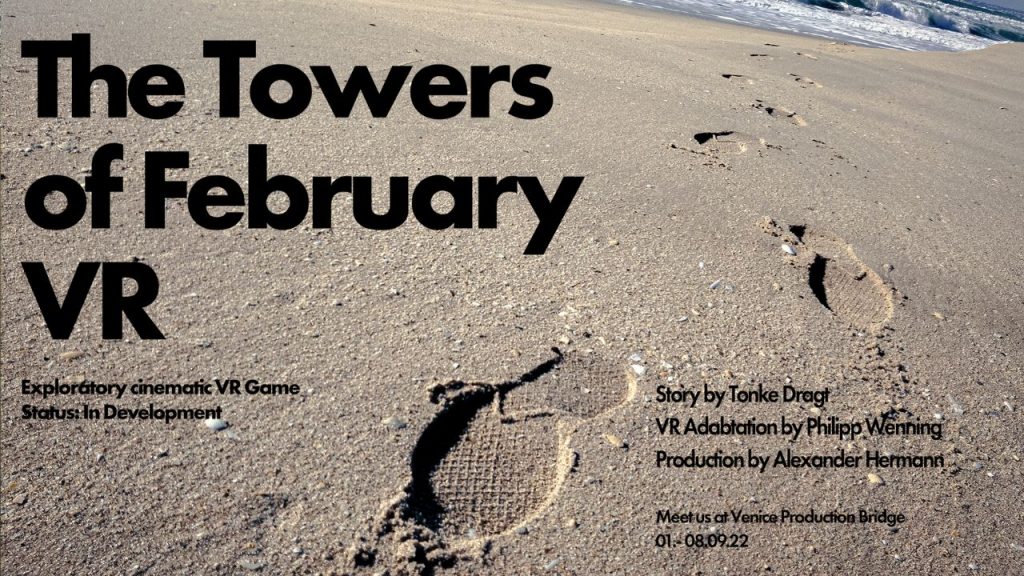
WE SPEAK THEIR NAMES IN HUSHED TONES (Nigeria, South Africa)
by Osakpolor Omoregie | Electric South
OSAKPOLOR OMOREGIE – We speak their names in hushed tones is a photography, VR and installation documentary project on irregular migration from Africa to Europe and the psychological turmoil it causes to families who have no clue on the whereabouts or wellbeing of their migrant relatives. The focus is Edo State, Nigeria, where I’m from. In creating WSTNIHT, I aim to shift the focus of migrant reports to the families of irregular migrants, because I have experienced firsthand in my extended family the turn-around my aunts and cousins had to do in their daily lives to cope with loss and uncertainty.
I am using virtual reality for this story. At the initial stage, I wanted to use Augmented Reality, but as I read more about AR, I realized the story would be more compelling as a VR animation piece. With this medium, I hope to transport my audience into the minds of these grieving left behind families. This is the reason I chose an immersive medium like virtual reality.
I feel every part of the project– from the intimate portrait photographs (diptychs) of these family members and their missing relatives, to the installation and VR animation – would have a great impact on the audience. They’re integral parts of the whole piece. However, I feel the virtual reality aspect would have more impact on the audience because of how immersive it is. All senses of the user will be engaged in this production so they feel, hear and experience wholly. I want my audience to get thinking about the families of irregular migrants and the migrants themselves. In doing this, documenting migration becomes even more human with more than one focus. The ultimate goal is representing migrants beyond the orange vests images of them in dingy boats at sea that are littered everywhere—as people with families and homes that miss them enough to constantly keep up hope. Beyond that too, my goal is to show them beyond the news headlines by taking the audience to the families they left behind. Perhaps, provide psychosocial help for the families too.
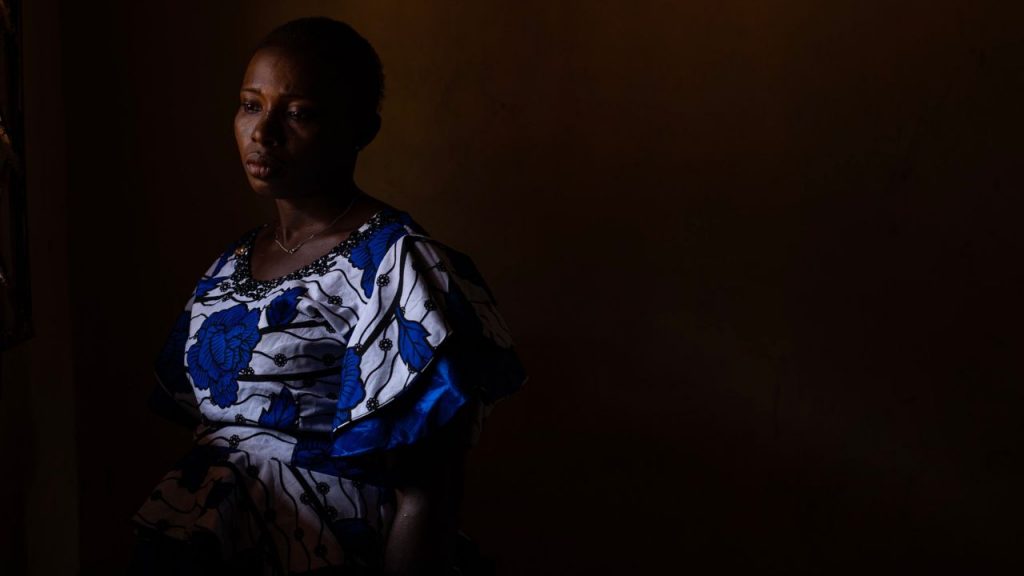
The Venice Gap-Financing will also include 11 projects developed during the Biennale College Cinema VR. The titles are:
- 1991 (Turkmenistan, USA, Canada) by Akmyrat Tuyliyev and Christina Elizabeth Borins, Sensorium
- DEUSA DAS AGUAS (France) by João Paulo Miranda Maria, Les Valseurs
- HUMART (Poland, UK) by Michał Stankiewicz, Liliana Grzybowska
- KEEPER (Ireland, Italy) by Jennifer Shortall, Nuwa Digital Media
- LOCKED UP (Italy) by Antonio Messina, Robin Studio
- MASSAD (Italy) by Alba Zari, Slingshot Films
- METEORA (Italy) by Jacopo Marco Zanessi, Kublai
- QUEER UTOPIA (Portugal, Brazil) by Lui Avallos, Mundivagante Studio
- SENSING MIRROR (Taipei) by Peiying LIN, Chin Hsuan SUNG
- SOMEWHERE UNKNOWN IN INDOCHINA (Taipei, Belgium, Cambodia, Vietnam, USA) by Asio Chihsiung LIU and Feng-Ting TSOU, Mimeo Films Ltd
- THE THREAD. STORIES ABOUT MOTHERHOOD (Italy, UK) by Elena Baucke, Ludovica Fales
See you all in Venice in… a week from now!

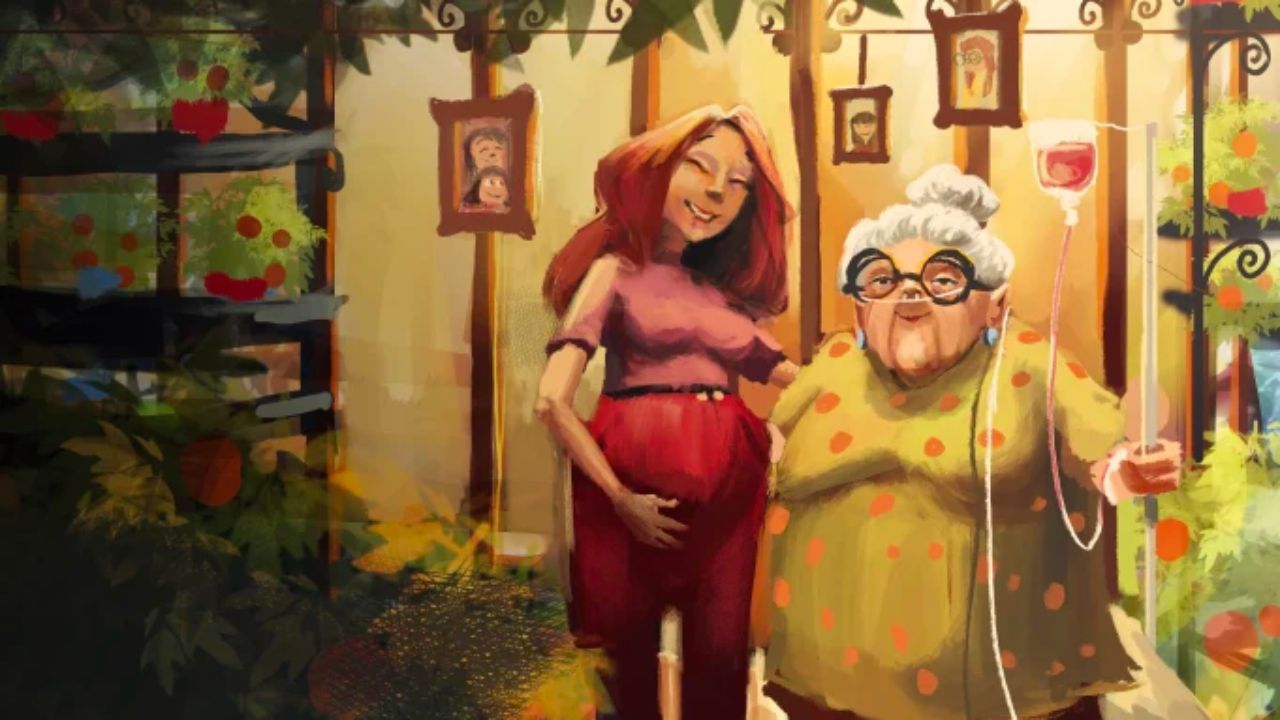

Leave a Reply
You must be logged in to post a comment.